Introduction
We’ve been busy adding new and exciting features to ArcGIS Workflow Manager to improve user collaboration and meet the business needs of multiple industries. If you are new to Workflow Manager, welcome, we are happy to have you! Our product focuses on simplifying and streamlining your organization’s management of GIS operations.
Learn more about ArcGIS Workflow Manager
The latest release of Workflow Manager focuses on several awesome improvements that I’ll describe below. Alternately you can catch up on what’s new in this video:
Watch our video overview of new features and Capabilities in ArcGIS Workflow
In this Article
Use the links below to jump to topics of interest.
-
- Evaluate Data Quality is a new step type that allows you to evaluate the quality of data used in jobs.
- Workflow Manager Server can now be deployed in high-availability sites.
- Scheduling options are now available for job creation, and allow you to create new work at specific times or cadences.
- Adding a Comment is a new capability and allows you to comment as part of a step or separately as part of a feed of comments. The comments are available as a living history of communication for the work.
- Send Web Request is a new step that allows you to send requests to REST endpoints to get data or post updates
- Updates to Define Location step allow for the job’s location to be defined using and ArcGIS Arcade Expression
- Job Relationships have been added to allow you to create Job Dependencies and Parent-Child job relationships between jobs
- ArcGIS Pro Panel has new enhancements to continue improvements to match experience in the web app
- Workflow Manager is now included in the installation of Portal for ArcGIS and is available in 39 localized languages
- Job activities have been added to allow you to send email notifications to individual users or groups of users when a specific event occurs.
- Rest API Documentation is now available

Evaluate Data Quality Step
The Evaluate Data Quality step allows you to, automatically run preconfigured attribute rules, topology rules, and ArcGIS Data Reviewer rules on data submissions. You can guide the workflow based on the results of the data quality evaluation to do things such as reject or accept a submission without user interaction.
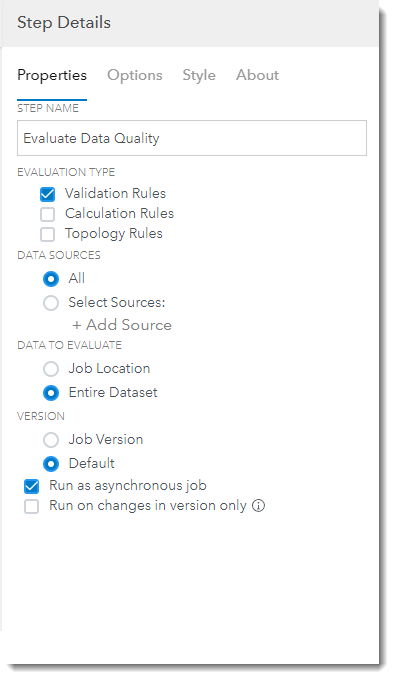

Highly-available deployment
Many organizations have strict requirements for server performance and uptime. We addressed these concerns by adding support for deploying Workflow Manager Server high-availability sites. This allows you to configure two or more Workflow Manager Server Machines for increased performance and reliability.

Scheduling options for jobs
To assist with the creation of jobs for recurring types of work, and for scheduled monitoring of third-party sites, we implemented a new job scheduling feature that allows you to automatically create jobs according to a schedule you set. This allows users with the Workflow Manager Advanced Server role to create work that needs to be performed during specific times of the day, or on specific intervals, like the 1st of every month.
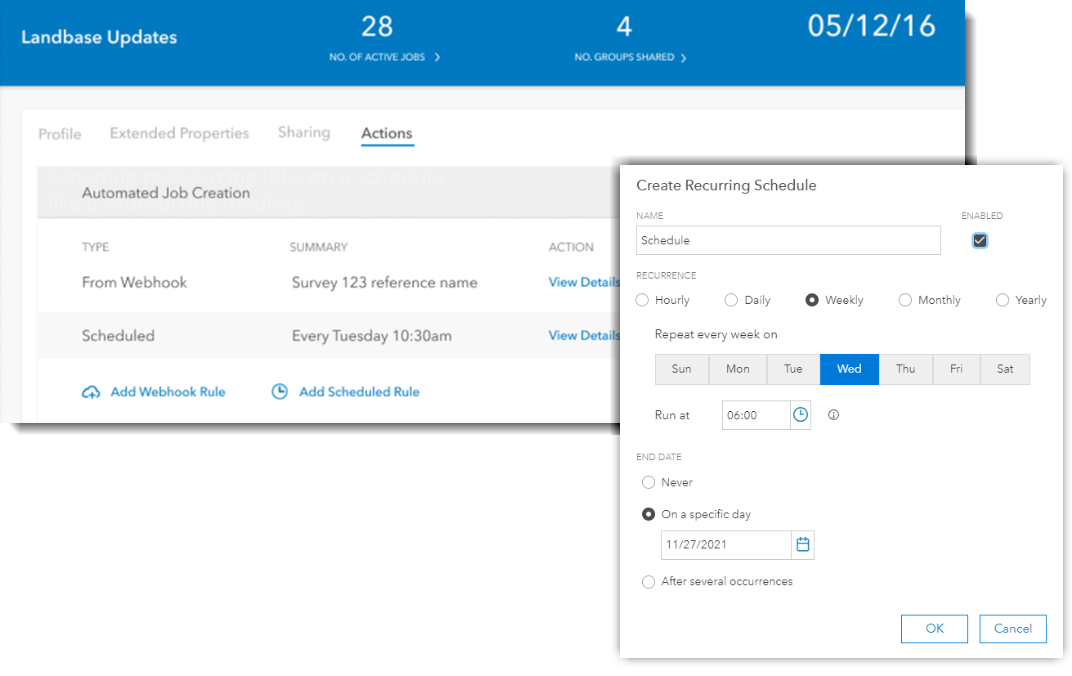

Improved user collaboration
Job Commenting is now available in the Details panel in the web app and as part of steps in the workflow, providing users with the ability to add and view job comments. This functionality enables workflow Manager users with an opportunity to provide feedback, job updates, and other timely information throughout the life cycle of a job and comments can later be extracted into emails using Arcade Expressions.
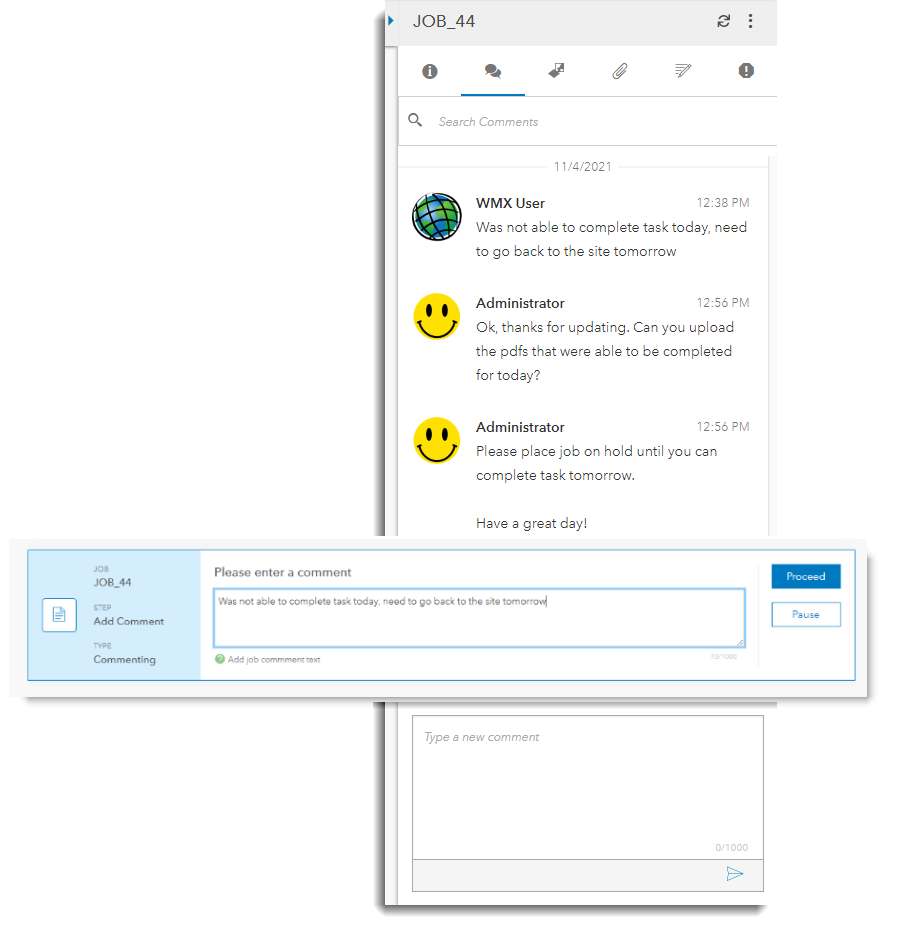

Send Web Request step
The Send Web Request step allows you to send requests to REST endpoints to get data or post updates from a third-party system to drive your workflows. This step can also be configured to store the response from a request as output values that can be used automatically direct the path a job takes based on the response received or to update the job properties. To learn more about the usability of the Send Web Request step read “Introducing the ArcGIS Workflow Manager Send Web Request Step” blog post.
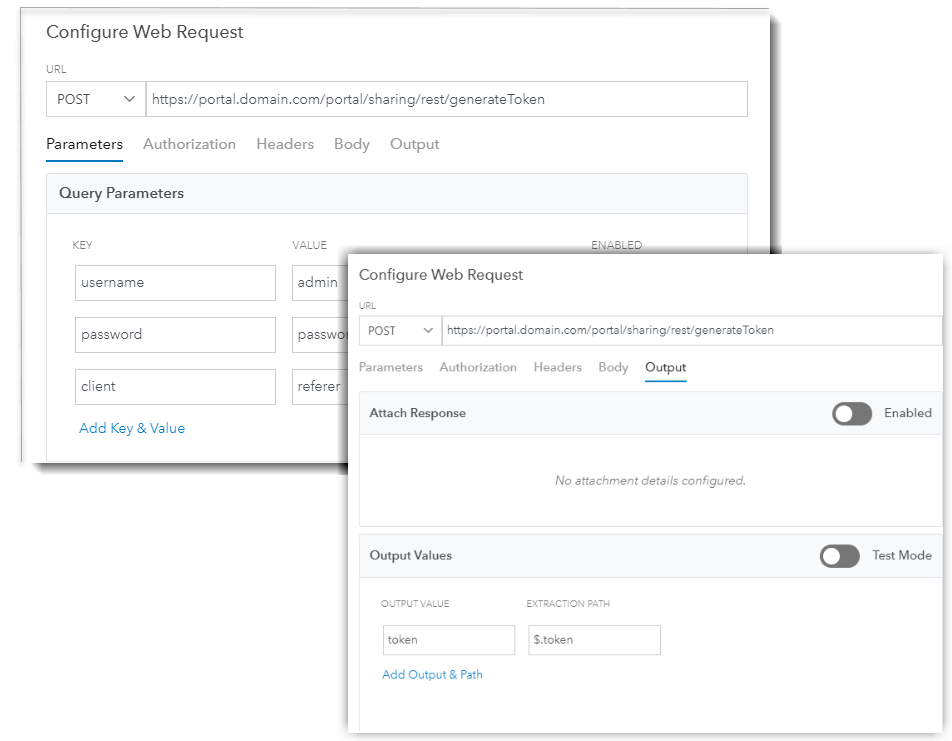

Updates to Define Location
We have enhanced the Define Location step to be able to define a job’s location using Arcade Expressions. This enhancement allows for users to define the location by using Arcade Expressions from a survey or service to get the coordinates for the step instead of needing to manually input in the location in a map.


Job Dependencies
Job dependencies allow you to create relationships between jobs that determine the order in which related jobs need to occur before another job can be started or finished. For example, a field survey job needs to be completed before a parcel editing job can be started. In this case, a dependency can be put in place and released once a survey is completed. Dependent jobs and steps that are blocking other jobs from running can be viewed and managed on the Holds tab in the Details panel in the web app.
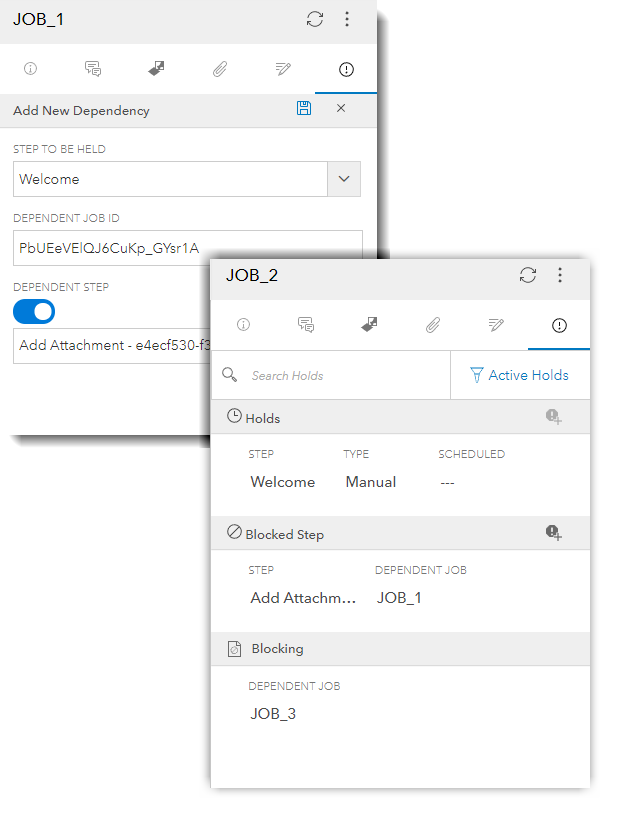

Improved access to Job Information in ArcGIS Pro
One of our main focuses for this release was to unify the user experience of Workflow Manager in the web app and in ArcGIS Pro. We prioritized enhancements to the Workflow pane in ArcGIS Pro to provide equivalent job information and capabilities to what’s available in the Details panel in the Workflow Manager web app. Over time we plan to continue to add updates to the job panel in ArcGIS Pro.
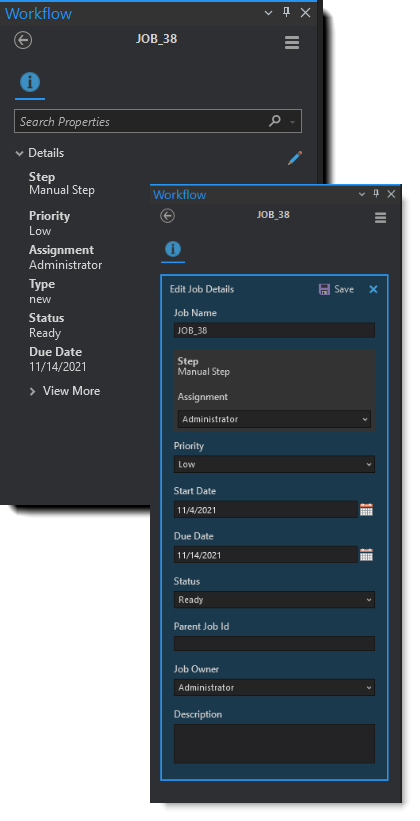
Jobs can now also be sorted in the job list in the Workflow pane.
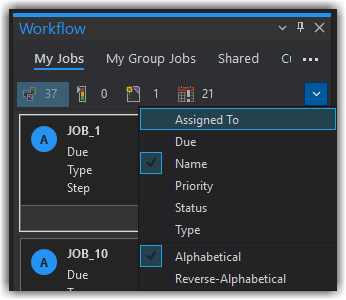

Parent-Child job relationships
You can now create Parent-child relationships to establish a hierarchy between jobs in Workflow Manager. This relationship can be established when a job is created using the Create Job step, by associating it with an existing job using the Update Properties step or by manually specifying a job ID in the Parent Job text box in the Details panel. The child job can be created with a dependency in a such a way that the parent job is temporarily restricted from progressing while work is being performed on the child job. Once the child job is completed, the dependency is released, and work can continue in the parent job.
Using the parent- child relationship allows you to divide complex workflows into subprocesses that can be managed based on location or other factors. This relationship can be visualized on the map in the Workflow Manager web app on the Manage page by clicking the Group by parent job option. Parent-child relationships are useful for when an issue was encountered during an inspection and a maintenance request needs to be automatically created for example.
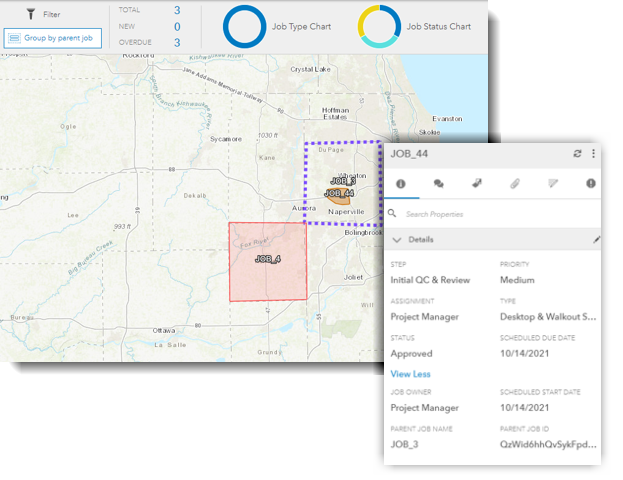

Localization
The web app is now included with Portal for ArcGIS and is available in 39 localized languages. To learn more on how to localize Workflow Manager web app, please refer to the following documentation, Localize Workflow Manager.
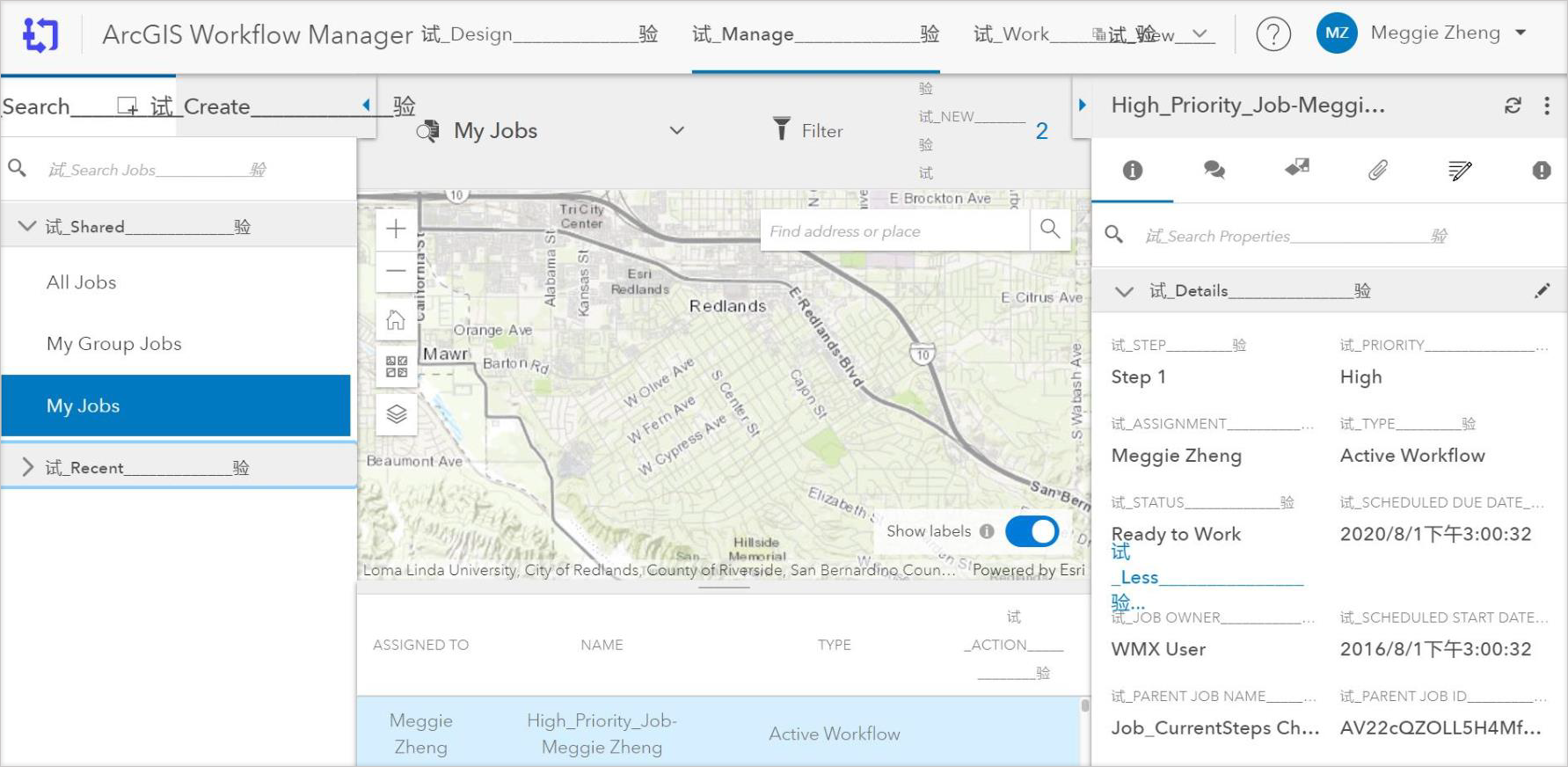

Job activities
Job Activities allow email notifications to automatically be sent out making it easier to get notified when certain activities like job creation, job assignment, job closing etc. occur independently of running a step in the workflow. Job Activities are available with the ArcGIS Workflow Manager Server Advanced role. Email templates for these notifications can be set up in the Email Templates tab the Design page.
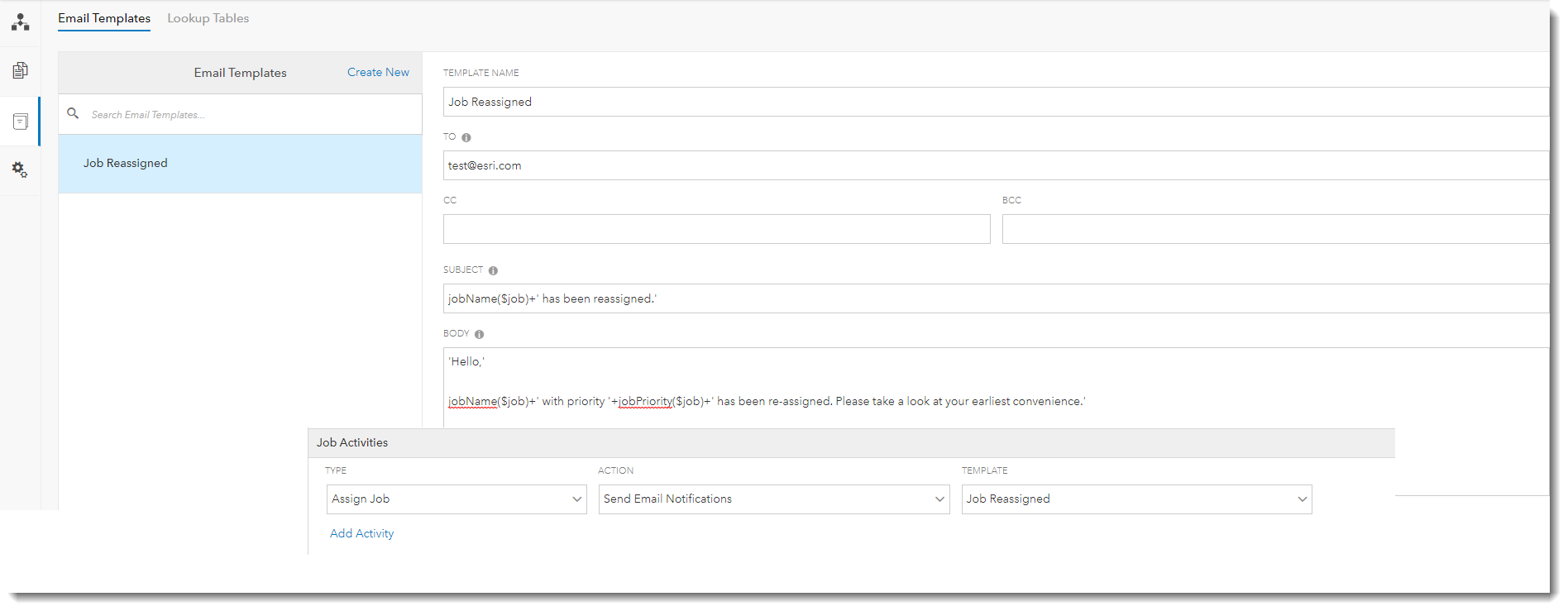

Rest Documentation
Documentation for the Workflow Manager REST API is now available and provides your organization with information on how to access job information, users, and other system-wide properties. This will allow your organization to utilize Workflow Manager API endpoints and assist in configurations.

Article Discussion: